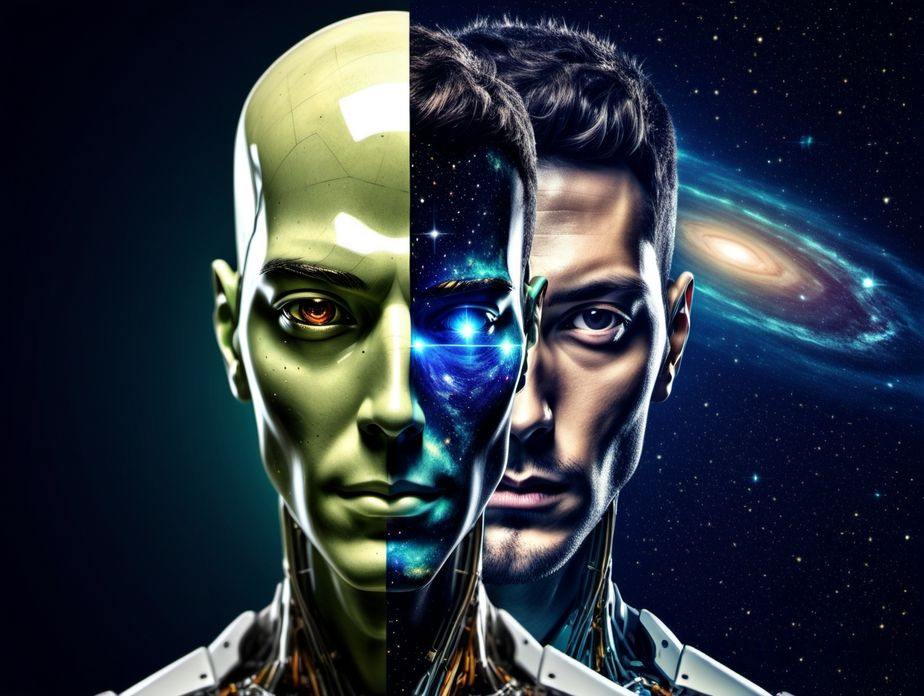In an era dominated by technological advancements, the fear of artificial intelligence (AI) replacing human jobs looms large. However, a closer examination reveals a nuanced reality. Rather than AI outright replacing jobs, it is the integration of AI by workers that may reshape the professional landscape. This article explores the dynamics of AI in the workplace, debunking myths and shedding light on the professions that might face transformation.
Introduction: The AI Revolution in the Workplace
As AI continues to evolve, the question on many minds is whether it will render human workers obsolete. Contrary to popular belief, the rise of AI doesn’t necessarily equate to job displacement. Instead, the focus should shift towards understanding how individuals who embrace and adapt to AI technologies will redefine the workforce.
The Collaborative Era: Humans and AI Working Hand in Hand
AI excels at automating routine and repetitive tasks, allowing humans to redirect their efforts toward more complex and creative endeavors. Rather than replacing jobs, AI becomes a powerful tool that enhances productivity and efficiency. Industries across the spectrum are witnessing a collaborative era where humans and AI complement each other’s strengths.
Professions Reshaped, Not Replaced
Certain professions are more susceptible to AI-driven transformations. Routine-based jobs, such as data entry and simple calculations, face automation. However, this doesn’t spell doom for workers but rather a shift in job requirements. Those who embrace AI technologies can upskill, taking on roles that require critical thinking, creativity, and emotional intelligence—attributes where machines currently fall short.
The End of Routine, Not Creativity
Creativity, a distinctly human trait, remains a stronghold against AI encroachment. Professions that heavily rely on creative thinking, innovation, and emotional understanding are less likely to face direct threats from AI. Instead, AI becomes a supporting force, handling mundane tasks and freeing up creative minds to explore new possibilities.
Education and Continuous Learning: Key to Adapting
The changing landscape demands a shift in the approach to education and professional development. Continuous learning becomes imperative for individuals to stay relevant in a workforce increasingly influenced by AI. Adaptable workers, equipped with a blend of technological and soft skills, are better positioned to navigate the evolving job market.
Professions Most Affected by AI Integration
While AI may not replace jobs, it undoubtedly transforms certain professions. Routine-based roles in manufacturing, customer service, and data analysis face significant changes. However, these shifts pave the way for more specialized, human-centric roles in AI maintenance, programming, and ethical oversight.
AI in Healthcare: Augmenting, Not Replacing Medical Professionals
In healthcare, AI aids diagnosis and streamlines administrative tasks, allowing medical professionals to focus more on patient care. Surgeons, doctors, and nurses can leverage AI for data analysis and treatment suggestions, enhancing overall healthcare delivery without replacing the essential human touch.
The Evolving Landscape of Transportation: From Drivers to Technicians
The transportation industry is experiencing shifts with autonomous vehicles. While driving jobs might decrease, demand for technicians and engineers skilled in AI maintenance and oversight rises. Human expertise becomes crucial in ensuring the safe integration of AI into transportation systems.
Customer Service: AI as a Supportive Partner
Customer service is another sector undergoing changes with AI chatbots and virtual assistants. While routine inquiries may be handled by AI, human agents become more valuable in addressing complex issues, understanding nuanced emotions, and building meaningful customer relationships.
AI and Finance: Enhancing Decision-Making, Not Replacing Analysts
In finance, AI optimizes data analysis and risk assessment. However, financial analysts remain indispensable for strategic decision-making, interpreting complex data patterns, and providing insights that AI might overlook. The financial landscape benefits from the synergy between human intuition and AI precision.
Conclusion: Embracing the Future of Work
In the ever-evolving landscape of AI and automation, the key lies in adaptability and collaboration. Rather than fearing job replacement, individuals and industries can leverage AI as a transformative force. The future of work is a symbiotic relationship between humans and AI, where innovation, creativity, and emotional intelligence remain distinctly human strengths.
As we navigate this transformative period, the emphasis should be on equipping the workforce with the skills needed to thrive in collaboration with AI. The professions most in danger are not those resistant to change but rather those unwilling to embrace the opportunities that AI presents. The future belongs to those who understand that the true power lies not in AI replacing jobs, but in individuals using AI to redefine and enhance the very nature of work.
